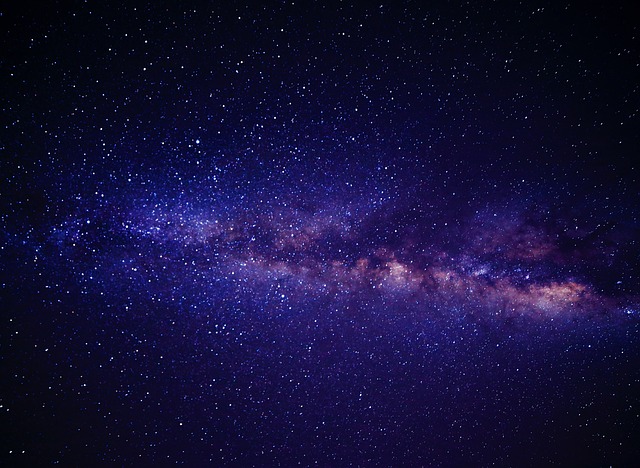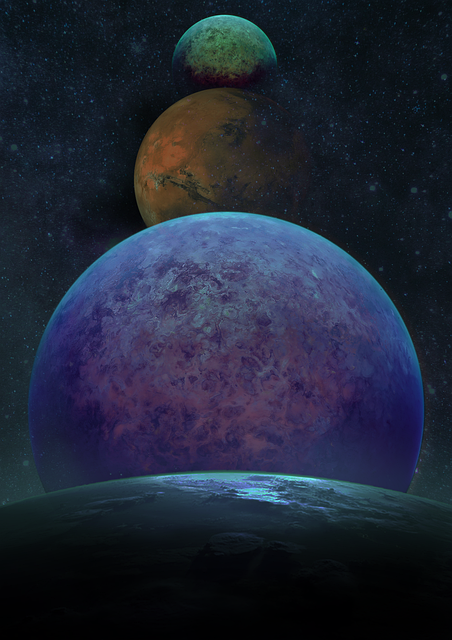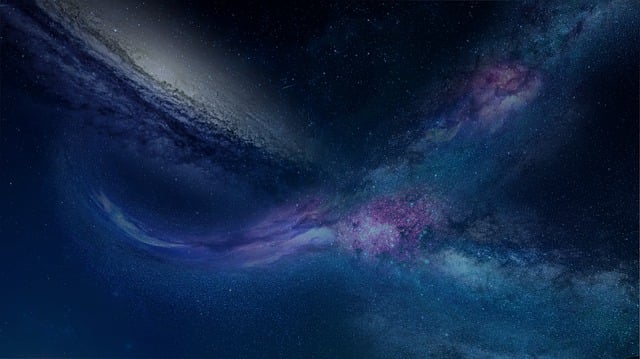Does God Exist?
Scientific and philosophical arguments supporting monotheism.
I. The Cosmological Argument

The word “cosmos” – meaning universe or world is the root word used here. This argument is based on the premise that the universe is not eternal, that it had a beginning and that everything in the universe is dependent upon something else for its existence. This argument takes us back to the very beginning of the universe. Did the universe have a beginning? If we can establish that the universe had a beginning then a conclusion can be reached that something eternal and uncaused brought the universe into existence.
The argument is stated like this:
1. Everything that had a beginning had a cause.
2. The universe had a beginning.
3. Therefore, the universe had a cause.
The premise of the argument is based on the Law of Causality which is a basic principle upon which all of modern science is built. If we establish that something had a beginning, it must follow that it has a cause. This Law of Causality serves as the foundation for the cosmological argument.
Where did the Universe come from?

The universe (all of matter, time and space) exists and there are three possibilities as to how and why it exists.
1. The universe was self-created – self- caused
2. The universe is eternal – it has always existed.
3. The universe was caused by something eternal.
Let’s look at these three options. First, what would it take for something to create itself? Well, it would have to exist in order to create itself. It would have “to be” and “not to be” at the same time and this we know to be an irrational non-sense statement and a clear contradiction. So if the universe had to exist before it existed it also had to exist and not exist at the same time. This possible explanation for the origin of the universe is not a viable one. It violates the self-evident first principle, the Law of Non-contradiction. Even if it was conceivable for inanimate matter to produce life, could it produce intelligent life if it were not intelligent itself?When we refer to intelligent life we mean life that has the ability to think and act on its own behalf with purpose and planning. Can the matter based universe that we observe produce this kind of life without intelligence? Intelligent life points to an intelligent life giver and designer.
The idea and concept of a self-created universe may appeal to certain groups of people, but when we examine it based on the laws of logic we have to conclude that it fails the most basic investigation. Under certain experimental conditions, the motion of atomic particles can act in very unpredictable and random ways. Based on this type of response, this behavior can be classified as “indeterminate”. Indeterminate means not precise ,vague or not exact. What this means is that scientists do not know why these atomic particles act as they do. But this does not mean that the motion was uncaused or caused by nothing. We know as a fact that motion is always caused by something even if we do not know how or why. There is simply no basis for believing in self creation.The second option states that the universe is eternal and static. It has always existed and has never had a starting point or a time of origin.
This eternal universe needs no cause or causality agent. Carl Sagan’s famous line “the Cosmos is everything that ever was, everything that is and everything that ever will be” is based on this concept. He was clearly claiming that the universe is infinite, timeless and eternal. If however, we can determine that the universe is not eternal or static, that it indeed had a beginning, then the third option is the only explanation that we are left with – the universe was caused by something eternal. In examining this option we can use six lines of evidence represented by the acronym memory tool BE-SURE to assist us in establishing the validity of the limited and finite nature of the universe.
B.E.S.U.R.E. about the Universe

B- Big Bang Theory
E – Einstein’s theory of general relativity.
S – The Second Law of Thermodynamics.
U – the Universe is expanding
R – Radiation Echo
E – End of Infinite Impossibility.
B – Big Bang Theory
This theory states that in the distant past there was an event that occurred from which all of time, matter and space came into existence. This event was both singular and instantaneous. Today, the vast majority of the branches of science support this theory. The theory proposes that a hot very intense energy-based explosion took place and from this event all of the matter and energy that eventually formed into galaxies, star systems and planets was established. The universe began at a fixed point in the distant past and it had a rapid expansion and still continues to expand. However, it is running down of usable energy in what scientists have described as “entropy” and it will eventually wind down and die.
Scientists such as Albert Einstein, Alexander Friedman and George Gamow served to provide a foundation from which the vast majority of scientists today would conclude that the Big Bang theory is a scientific fact. The famous cosmologist Stephen Hawking stated “Almost everyone now believes that the universe and time itself had a beginning at the Big Bang” 3. It is possible that in the future the Big Bang Theory will have refinements and modifications as further research takes place. This is something that should be welcomed by all of us who desire factual observational truth. However, the general direction and overwhelming scientific evidence at this present time points to the limited and finite nature of the universe in which we live.
E – Einstein’s Theory of General Relativity

In 1915 Albert Einstein developed the General Theory of Relativity which led to the equation E=mc2. E = energy, m= mass and c2 = the speed of light squared. This equation served as the basis of other derived equations which described the relationships between the speed of light, gravity, mass and other factors. The results of these findings caused Einstein to realize that the universe is decelerating and as more research continued the idea of a static universe was no longer valid. Instead, the discovery that the universe is expanding and that it could be linked back to an original point before which it did not exist became an established scientific reality. In 1929 astronomer Edwin Hubble while researching the light coming to the earth from distant galaxies through the lens of the telescope at the Mount Wilson Observatory, found that the light from the galaxies had a red shift or longer wavelengths than what would be expected.
This “red shift” was explained to be due to the fact that the galaxies are expanding and moving away from the point of observation. He essentially proved that the universe was expanding at exceedingly high velocities. This was the first astronomical observation to confirm Einstein’s theories. In 1929 Einstein himself made a trip to the Mount Wilson Observatory to see this for himself. The evidence that he saw confirmed the expansion of the universe as the theory of general relativity had predicted. This theory of E= mc2 absolutely requires the beginning of time, matter and space and it demonstrates that these factors are interdependent to each other.
S – The Second Law of Thermodynamics
Thermodynamics is the study of energy and matter. The 1st law of thermodynamics states that the amount of actual energy in the universe remains constant and serves as a factual observation of the presence of energy in the universe. However, the 1st law does not tell us anything regarding the eternal nature of energy.
The 2nd law of thermodynamics states that the universe is running out of usable energy and demonstrates that the available energy is limited and not eternal in nature. As time passes the total amount of energy that can be utilized is decreasing which leads to the reality that one day all of the energy in the universe will be depleted of its usefulness and functionality and at that point the universe will die. Like a flashlight running on a limited number of batteries, the light will eventually go out.
This then leads us to the point that if the universe was somehow static and eternal it would have run out of energy by now and would have reached this point of death in the far distant past.The 2nd law of thermodynamics is also known as the law of entropy. The law of entropy states that the universe and everything within the universe is tending toward disorder and in time will reach a point and state of total disorder. The fact that the universe has not run out of usable energy and that it has not reached this state of total disorder is because the universe is not eternal – it had a beginning.Astronomer and physicist Sir Arthur Eddington stated regarding the 2nd law of thermodynamics – “The Law that entropy increases – the Second Law of Thermodynamics – holds, I think the supreme position among the laws of Nature…. If your theory is found to be against the Second Law of Thermodynamics I can give you no hope; there is nothing for it but to collapse in deepest humiliation”. 4.
U – The Universe is Expanding
Albert Einstein’s theory of general relativity (E=mc2) predicted the expansion of the universe. But it wasn’t until 1929 that astronomer Edwin Hubble discovered that light from distant galaxies were emitting a redder light than what they would normally be expected to be providing. This discovery led him to conclude that the light was redder because the universe was expanding and this expansion of the galaxies away from the point of observation produced a red shifted or longer wavelength of emitted light. The galaxies which are moving away from the earth produce light spectra that have longer wavelengths. He observed that these galaxies produced this “red shift” appearance and because of this observation confirmed that the universe is expanding. This expansion started at a point of “nothing” and then exploded into being. So there was “nothing” and then a BIG BANG – there was something ( space and matter) and that “something” was an expanding “something”.
This expansion of space and matter continues to expand not simply as something that is expanding out and into space but rather space itself is expanding.For example, take a balloon and mark it at various points with a pen marker which would represent the various settings of the galaxies. As we fill the balloon with air the balloon’s edges expand outward moving and distributing the marked points away from the center and away from each other. This is what has taken place in the expansion of the universe and it continues to take place today. A point of nothing exploded into time, matter and space and then began to expand and create space. This expansion of the universe points to a starting point in time and also requires a Starter or First Cause that is eternal and that created this expansion of the universe out of nothing. The eternal and static nature of the universe is refuted by this observational expansion of the universe and this points toward the universe as having a beginning in time.
R – Radiation Echo

Arno Penzias and Robert Wilson were two physicists at the AT/T Bell laboratories in Holmdel N.J. In 1965 they were performing experiments on a very sensitive radio and antenna receiving device. They began to pick up an unknown source of noise on the receiver. Initially they thought it was noise due to disturbances from bird (pigeon) droppings. But as they continued their work they found that this radiation was still present and that it was coming in from all directions. What they had detected was cosmic microwave background radiation noise left over from the initial “Big Bang” explosion.This afterglow was actually light and heat microwaves that resulted from the initial beginning of the universe. The light was no longer visible due to the expanding process but the heat microwaves were still able to be detected. This discovery, which resulted in each of these two scientists being awarded Nobel Prizes, is another confirmation of the beginning point of the universe and of its finite nature.
Astronomer Robert Jastrow stated that this discovery essentially confirmed the limited nature and beginning necessity of the universe – “No explanation other than the Big Bang has been found for the fireball radiation. The clincher which has convinced almost the last Doubting Thomas is that the radiation discovered by Penzias and Wilson has exactly the same patte of wavelengths expected for the light and heat produced in a great explosion. Supporters of the steady state theory have tried desperately to find an alternative explanation, but they have failed. At the present time, the Big Bang theory has no competitors”. 5
E – End of Infinite Impossibility
This is a philosophical line of evidence which points to the beginning of time. If the universe has always existed then time would also have always existed. The universe and time would have existed from all of eternity. However, if there was no beginning of time we could never arrive to this day – this current point in time. Today is the end day in history and is the final point in the collection of all the days of all of time. This eternal infinite impossibility argument looks like this.
1. If an infinite number of days and moments occurred before today, then today would have never arrived.
2. But today has arrived.
3. Therefore, there has not been an infinite number of days before today – time had a beginning and the universe had a beginning.If there is not a definite point from which time begins then there is no way to get to the current point in time – today.
An example of this assumes a time line as shown below.
Today

The line ends at the right end of the line – today. The time line cannot be infinite to the left end of the line because something that is infinite has no end. The time line cannot be infinite because tomorrow we will add another day to the line and you cannot add anything to something that is infinite. This is what an infinite past does to the possibility of ever arriving at the end point of today.
If there is not a starting point there cannot be an ending point.
People can play games with numbers in very abstract and theoretical ways to attempt to get away from this logic. Infinite numbers can exist but infinite days and moments cannot. The reason for this is that an infinite series of numbers is abstract and purely theoretical.
However, the actual numbers of days are literal and concrete realities. This is also why there could not be an infinite number of “Big Bangs” or an infinite number of universes. An infinite number of actual, literal events is not possible.
Conclusion:

When we examine these six lines of evidence (BE SURE) we can conclude that the universe had a beginning.
1. Everything that had a beginning had a cause.
2. The universe had a beginning.
3. Therefore, the universe had a cause.
The three options that we looked at to answer the question of how the universe came to exist are:
1. The universe is self-caused.
2. The universe is eternal – uncaused
3. The universe was caused by something that is eternal and uncaused.
The first option is irrational and does not stand up to any line of evidence or investigation as we noted earlier. This leaves the final two options as the only viable possibilities. Is it logically possible for the universe to be eternal? Yes, but the evidence of scientific observation points away from this option. When we examine the six lines of evidence for the non-eternal nature of the universe – BE SURE, the evidence points to something eternal, infinite and separate from this universe that has directly caused the finite universe to exist. This first Cause must be timeless, immaterial and eternal. It cannot be of the same substance as the universe because it caused the universe to come into being out of nothing. It must be all powerful to cause the universe to arise out of nothing. It must be personal since it made the decision to bring the universe into being. It must be an all-knowing, intelligent reality to produce the apparent design, incredible detail and noted precision of the universe. It must be perfect with no faults or limitations, one necessary reality.
This necessary reality which is completely perfect cannot be more than one in nature.To distinguish one being (personal reality) from another, they must differ in some way. If they differ in some way, then one being lacks something that the other one has. Then the lacking being cannot be an infinite being because by definition an infinite being lacks nothing. So there can only be one necessary Being.The evidence that we have looked at in the Cosmological Argument is very supportive of a Being we would refer to as God. A singular, perfect, infinite and eternal Being who is the ultimate reality of the universe. Arno Penzias – Nobel Award Scientist – “Astronomy leads us to an unique event, a universe which was created out of nothing and delicately balanced to provide exactly the conditions required to support life. In the absence of an absurdly-improbable accident, the observations of modern science seem to suggest an underlying, one might say supernatural plan”. 6